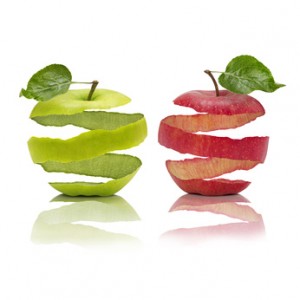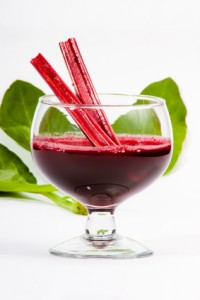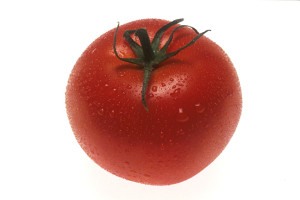This week, read about how wind resistance affects performance in cycling and running, Herbalife, Shakeology, new research on muscle cramps, nutritious foods you should stop throwing away, beet juice for high altitude, eating to heal sports injuries, dietary supplement regulation, and more.
2 Nutrition Scams – Shakeology and Herbalife
A few expert reviews. You can save your money and eat healthfully by enjoying real (and delicious) food!
Shakeology: Nutrition Scam & Waste of Money. A look at the nutrition in the shake, and the multi-level marketing scheme. (Fooducate)
Herbalife. Dietitian Diana Chard provides a nice review of Herbalife, summing it up with “Herbalife is a company with a dubious sales model, selling questionable products (I’m being generous here) that’s run by a doctor with a clear lack of integrity. If you want soy nuts, go to the Bulk Barn. Don’t waste your money supporting a despicable company like Herbalife.” (Diana Chard, Bite My Words)
Find more News and Reviews of Popular Diets here.
Can reducing wind resistance improve your performance? Drag is a big deal in some sports. This week Alex Hutchinson looks at how professional cyclists are working on reducing drag without sacrificing power by making small adjustments that lead to considerable gains in performance. (Globe and Mail). He also goes further in his Runners’ World column wondering how much drag can influence running performance. While not as pronounced as cycling because of reduced speeds, drafting behind other runners has significant benefits, and swift runners (faster than 4:00/km) may see benefits with small adjustments, though this hasn’t been studied. Other sports with faster speeds (i.e., cross country skiing) would likely see benefits from drag reductions (better tucks on downhills, maybe even hats instead of headbands with ponytails . . .).
 Nutritious foods you should stop throwing away. A lot of food waste happens at home. Beyond better purchasing and food storage, you can reduce your food waste by changing some eating habits. This article offers good tips for celery leaves, apple peels, broccoli stalks, citrus rind, beet greens, and squash seeds. (Washington Post)
Nutritious foods you should stop throwing away. A lot of food waste happens at home. Beyond better purchasing and food storage, you can reduce your food waste by changing some eating habits. This article offers good tips for celery leaves, apple peels, broccoli stalks, citrus rind, beet greens, and squash seeds. (Washington Post)
Social media content may hold keys to important health information. A new study shows that the language individuals use in their social media posts may have a strong connection to their health. (BMJ Quality & Safety, 2015).
Muscle Cramps and side stitches. . .
Two articles this week looked at muscle cramping – a frustrating experience for many athletes.
Is there a way to prevent muscle cramps during exercise? Although many believe dehydration and sweating is at the root of most muscle cramps, the most recent studies don’t support this. Most new evidence points to fatigue and overexcited nerve endings as causing muscles to spasm. Strengthening and stretching the affected muscles are the current recommended treatments. (New York Times)
Can some foods prevent muscle cramps? Here is a list of 5 foods showing some evidence at reducing cramping, but the research isn’t solid, and it seems that the fatigue issue noted above in the New York Times article has more support. (Fooducate)
Some people call side stitches cramps, but this is likely a different phenomenon than a cramping calf or hamstring muscle. Clinically known as “exercise related transient abdominal pain,” this condition can be persistent and difficult to treat. Here’s a very thorough and recent review of the research, and a popular press article based on this research on side stitches here. Side stitches are likely caused by irritation of the parietal peritoneum, a membrane that wraps around the center of your body and abdomen.
Though at this point the research isn’t clear, some recommendations include improving core stability and posture (especially in the thoracic region), integrating core strength into a warmup routine, and running tall for good posture. (Some evidence suggests that side stitches are worse in cold-weather running races). Also avoiding large volumes of food/drink before might help – sports drinks might be best tolerated since athletes need the calories and carbs for their workout and they are well generally absorbed. If a stitch strikes during an event, deep belly breathing or pushing the affected area might help.
 “Beeting” high altitude acclimatization with beet juice. A new study study showed that drinking nitrate-rich beet juice restored reduced blood vessel function at high altitude. (Nitric Oxide: Biology and Chemistry). You can read more about the benefits of dietary nitrates and beet juice here.
“Beeting” high altitude acclimatization with beet juice. A new study study showed that drinking nitrate-rich beet juice restored reduced blood vessel function at high altitude. (Nitric Oxide: Biology and Chemistry). You can read more about the benefits of dietary nitrates and beet juice here.
Supplements cause more than 23,000 ER visits a year. Although many consider supplements “natural” and “safe,” they are unregulated and many adverse side effects likely go unreported. A study this week in the New England Journal of Medicine shows that an estimated 23,000 emergency department visits in the US yearly are attributed to adverse events related to dietary supplements. (New England Journal of Medicine).
Why aren’t dietary supplements regulated? Here’s a great explanation.
Enter the rockstar scientist, exit trust in science. This article comments on two scientists whose personal beliefs have led them to disregard evidence-based science (or any study that doesn’t support their view). Sarah Wild provides the example of Tim Noakes, a popular exercise physiologist, who endorses a very low carbohydrate diet (limiting daily carb intake to the equivalent of 1 apple) as the best diet for health, and supporting his views on social media with anecdotes that lack good science. Previously Noakes has been criticized for disregarding science (that doesn’t support his opinions), promoting his high-fat low-carb diet as evidence-based, and stating that a proven link between vaccines and autism have been covered up.
Can what you eat help heal sports injuries? Muscle and tendon injuries are common in athletes, and new studies are uncovering new rehabilitation and diet strategies that can help muscle and tendon heal faster. Exercise physiologist Asker Jeukendrup summarizes evidence presented at a recent conference for muscle injury and tendon injury. (Asker Jeukendrup, Mysportscience.com)
 Increasing lycopene absorption. Lycopene is an antioxicant compound belonging to carotenoid family that gives tomatoes, papayas, and watermelon a red hue. A large body of research has investigated lycopene for its health-promoting properties. Tomatoes are especially recognized for their lycopene content, and some research suggests that eating tomato products can decrease inflammation, an important underlying contributor to cancer, cardiovascular disease, and diabetes. This article offers tips on increasing your body’s absorption of lycopene. Although many people believe “fresh is always best,” processing and heating actually improve lycopene absorption (think canned tomatoes/tomato sauces). So does eating tomatoes with fat – which makes olive oil and tomatoes a winning combination for more than taste! (American Institute for Cancer Research).
Increasing lycopene absorption. Lycopene is an antioxicant compound belonging to carotenoid family that gives tomatoes, papayas, and watermelon a red hue. A large body of research has investigated lycopene for its health-promoting properties. Tomatoes are especially recognized for their lycopene content, and some research suggests that eating tomato products can decrease inflammation, an important underlying contributor to cancer, cardiovascular disease, and diabetes. This article offers tips on increasing your body’s absorption of lycopene. Although many people believe “fresh is always best,” processing and heating actually improve lycopene absorption (think canned tomatoes/tomato sauces). So does eating tomatoes with fat – which makes olive oil and tomatoes a winning combination for more than taste! (American Institute for Cancer Research).
A placebo can make you run faster. Another study reveals the power of the mind on athletic performance (Gretchen Reynolds, New York Times).
New study helps explain why eating disorders are so difficult to treat. Although many people make poor food choices, anorexia nervosa is a serious illness where maladaptive food choices can lead to starvation. In a new study, researchers from UC San Diego look at the neural mechanisms underlying anorexia nervosa with brain scanning techniques, and show that brain circuits involved in habitual behavior might help explain the destructive choices. When presented with images of food, brain areas of women with anorexia were more involved than in women without anorexia, suggesting that anorexics weren’t weighing the pros and cons of the food, but choosing based on past experience. The findings emphasize the importance of seeking treatment early. (Nature Neuroscience, October 2015).
Share This: